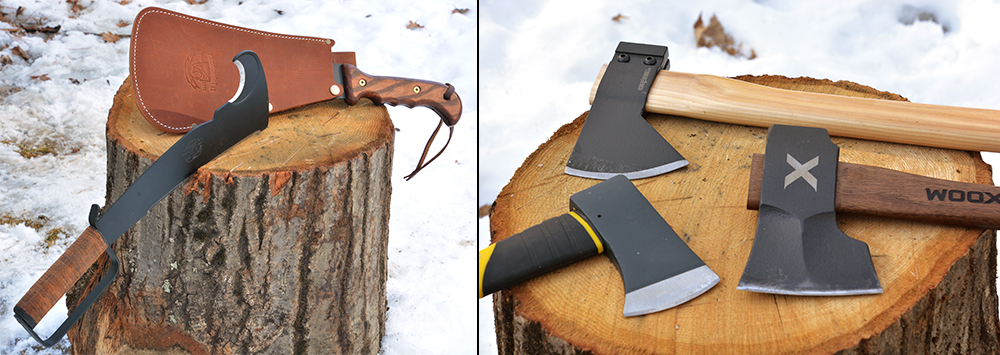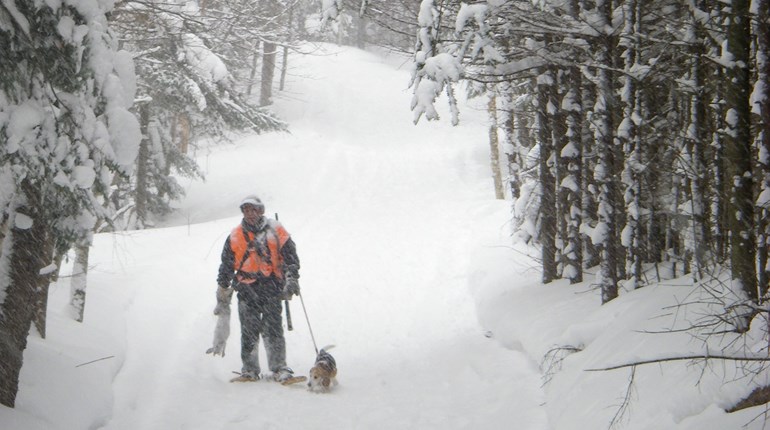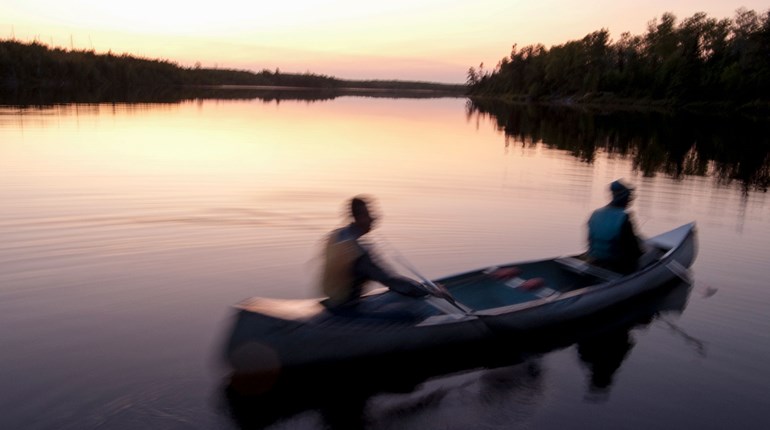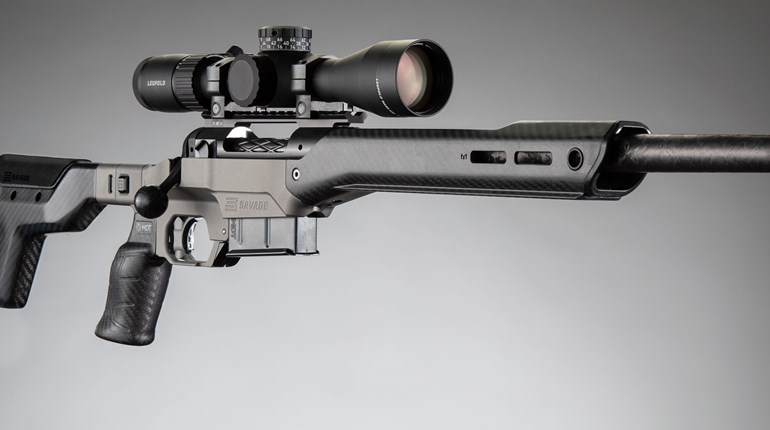
Survival in any sense of the word always involves blades, but not, as pop culture would suggest, for fighting off the zombie hordes. The idea that you can survive the apocalypse with a really cool katana is just going to get you killed. We have guns with which to fight, and bringing a sword to a gunfight is well—you know, kinda dumb.
Survival blades are for the everyday chores needed to get by, whether you’re camping or society has collapsed. Your needs will all change when you enter survival mode, however. The $500 santoku knife you used to prepare a gluten-free, plant-based, free-range, sous vide Cornish hen to impress your dinner-party friends will become far less important than the $50 folding knife in your pocket.
Survival means getting through what comes next. It also means making do with what’s available, since finding new things will be quite difficult. If you find yourself living deep in the mountains, sleeping in a hollow log, wearing rotting animal skins and living on bugs and grubs—buddy, you screwed up. A smart survival strategy is to plan to live well ever after. Think in terms of the blades needed to survive when survival becomes more difficult than civilization has made it. That’s what this article is about.
Anybody interested in survival should make a plan and ensure they have a few necessary and basic blades on hand—now. The great thing about this is we have so much from which to choose today. Never in history have there been so many options for bladed tools. Here are some that can help you live and survive, even thrive, in hard times.

Fixed-Blade Knives
Knives are the most important blades you will own.
Let’s start with your primary knife, the one you will have on your belt every day and all day. I think a fixed blade is the only way to go. For starters, they are much stronger than folding knives. Remember, if it breaks, replacements are going to be virtually impossible to find in a situation where society is not functioning. Also, when you draw a fixed blade it’s ready to use; no dangerous flicking or flopping necessary to access the blade. Finally, a fixed blade is much easier to keep clean.
The healthcare system may not be available, so you must focus on staying healthy. Your primary knife may be called upon for everything from draining an oozing abscess to cutting your steak at dinner, so it’s important that you can wash and sanitize it easily. Folders need not apply, as they have too many nooks and crannies to trap nasty stuff that could make you sick.
I believe the best option for a primary belt knife is what is commonly called a “Bushcraft” knife today, although that requires a bit of definition, as the line on just what a bushcraft knife is has gotten pretty blurred. The term likely started with the 1988 book titled “Bushcraft” by Mors Kochanski. In that book, he described his ideal knife. His focus was on making stuff like axe handles, canoe paddles, etc. He liked to whittle holes in pieces of wood and make things like spoons and bowls. His ideal knife was the Swedish Mora design. This led to that knife becoming a popular tool for bushcraft. It also introduced the Scandi-grind so beloved in the bushcraft world.
I am not saying that you should not have a survival or tactical knife; just have them in addition to your belt knife. You simply can’t have too many knives.
I have several Mora-style knives, and they are very useful, but I would not want to have one as my one-and-only knife until the end of time. If you are shopping, check out the Swedish FireKnife; this Mora knife has a ferro stick in the handle. I used to get annoyed at companies that put ferro sticks in every-darn-thing. Then I got thinking—matches and Bic lighters might be hard to find, post-disaster or apocalypse. Having multiple fire starters at hand is not such a bad idea after all.
“Bushcraft” as a knife term, though, morphed and changed, and today a bushcraft knife is usually a much different critter. They are bigger and tougher-built than the Mora design. Some are starting to edge into what we used to call a survival knife or “a big-ole hunting knife.” For the record, today’s survival knife is often a big, ugly beast with a long, heavy blade. They can be useful, but as a secondary choice—a backup to the more general-use knives.
To my thinking, a bushcraft knife is an all-around fixed-blade knife that can handle day-to-day requirements. That means it can slice potatoes, butcher a steer, carve a wooden peg and even stab a lethal threat if needed. I typically use a 3- to 3.5-inch fixed blade for hunting and outdoor work. That type of knife can serve very well here. A good fixed-blade hunting knife is never a bad choice. But, for a carry knife in a survival situation I prefer a blade an inch or so longer and perhaps a little thicker and heavier. Something that can handle the rough stuff, but still is not too big for skinning or other work. I prefer a drop-point blade with a full tang. The blade should be thick and strong, but the knife needs to be light enough to carry all the time.
Recently, I have been using a WOOX Rock 62 knife. It is made of Sleipner steel with a Rockwell hardness of 62, which holds an edge very well. I use a diamond stone to sharpen it and finished with ceramic, and I can shave with the resulting edge. I’m not going to—but I could.

A survival knife blade should not be serrated. If I were a yacht captain or a lasso fighter, serrated blades might be useful. After all, have you ever read anything about a serrated blade that didn’t mention cutting rope? Serrations are hard to sharpen and maintain. You may be living with this knife for years, even decades. Going through the tedious process of sharpening the serrations every time the knife is dull will make you want to cheer for end times to hurry up and get here. For long-term use, serrated blades are nothing but trouble. In my never-humble opinion, knife blades should be smooth and sharp, and don’t get me started on gut hooks.
Another thing you will see almost every time you read about a bushcraft or survival knife is batoning. That is to beat the knife with a blunt object to force it through a piece of wood. OK, I guess, if you are lost and alone on a deserted island with nothing but a knife and a volleyball. But, in the real world, we have hatchets and axes to split wood. Don’t abuse your knife like that.
Everybody who is anybody in the knife-making world offers or offered at least one model of knife to fit this description, so it should be easy to find one you like. Some are often sold as tactical or survival knives and use a similar blade, but they have bigger handles, sometimes adorned with a lot of useless junk you will never use. Those knives tend to be bigger and heavier. That matters when it’s on your belt all day.
I am not saying that you should not have a survival or tactical knife; just have them in addition to your belt knife. You simply can’t have too many knives.

Pocketknives
While I am a huge fan of single-blade folding knives, I would not trust one as my primary blade in a long-term survival situation, as anything with moving parts will, sooner or later, wear out or break. That said, a backup folding blade clipped into your pocket is not a bad idea. You may want to use it for those chores that are hard on a knife blade, so you can preserve the edge on your belt knife. There are thousands of options. I would go for a rugged knife with a drop-point or a clip-point blade about 3 inches long.
A pocket “jackknife” is a must have. I carry a Swiss Army Super Tinker in my pocket any time I have pants on. I have a great talent for misplacing that particular style knife and quickly become impatient without one. If it’s not found quickly, I buy another. Of course, that means I find the lost one right away, so I have half a dozen or more at any given moment. The scissors are the tool I probably use most, for everything from cutting my fingernails to snipping fish line.
The three-blade, stockman-style pocketknife is also a great choice for everyday chores. My wife gave me mine way back when we were very young and perpetually broke. It’s survived my trapping years and skinned a lot of muskrats. I still carry it often.
Butchering
Survival is going to mean processing your own protein. Butchering deer, elk, pigs or cattle will require some specialty knives.
Outdoor Edge has a good starter pack with most of the tools you will need contained in one box for a very affordable price. It’s pretty handy, too, during normal times, to have in deer camp. It even has a fillet/boning knife, so you can process fish.

Multitools
When Tim Leatherman’s Fiat broke down during a trip to Europe, it gave him an idea that launched a revolution. His Leatherman plier tool changed the knife industry. The newer Signal model is designed for survival use. It has a long list of tools including, of course, a ferro rod. Also, check out the company’s Free line of knives (sadly, it’s the product’s name, not its retail price). These are pocket knives with a bunch of tools in the handle. I have the Free K4, which is handy and very well made.
Whacking Blades
Tools you swing and hit things with
Axes and Hatchets
Nothing is more basic and essential for survival than an axe. They’ve been around for about 1.5 million years, so they must do something right.
A shorter handled “camp” axe is probably the one you will use the most. The WOOX Forte is said to be a hybrid of American and Italian thinking. It has a clever head design that works well to both cut and split wood, which makes it a great all-around choice. It comes with a leather sheath, which is a must have with any sharp tool. This is a high-quality axe that will be passed down for generations.
The Hudson Bay style of axe is an outdoorsman’s staple since the time when beavers were being persecuted by the British. Cold Steel has a Hudson Bay axe with a unique head-attachment system that clamps on tight and allows easy switching on its 27-inch handle.
A hatchet is simply a must have for everything from butchering game to trimming tree branches. I can’t imagine life without one. Just yesterday I used a hatchet to pound in a nail to hang a target, trim brush in the way of the target, chop the tail of a dead squirrel to use for tying flies and to split some kindling for my woodstove. That was just in the morning.

Woodsman’s Pal
The Woodsman’s Pal has been around since troops were issued it in World War II. It even comes with a booklet the Army wrote on fighting with the blade, so I guess it would be a good choice for whacking zombies if you can’t find that super-cool katana. Me? Back in my martial arts days, I spent a lot of time learning to defend against blades. The one true lesson I took away is that in a knife fight, the winner is usually the guy who bleeds to death last—that’s why I carry a gun.
The best use for this tool is clearing brush, trimming limbs and any place you would use a machete. My experience with most of the mainstream machetes available today is that they are junk. The soft blades bend and chip easily and will not hold an edge. In contrast, the Woodsman’s Pal, is a high-quality tool made of good steel that will last a lifetime. I used mine recently while setting up a pest-control trap line. It was perfect for cutting brush to hide the traps as well as clearing the location and even for digging a bed for the trap itself. This thing multi-tasks effortlessly. I would not hesitate to use it for butchering game or livestock. It’s one of those tools that just works for endless tasks.
It’s available with wood handles and, for a limited time, in a retro-grade reproduction of the original, which has a stacked-leather-washer grip. That one also has a guard to protect the hand just in case you do decide use it in a sword fight after all.
When I started outlining what I wanted to do with this article it quickly blew up to book size. I had to cut that down to fit the magazine format. It’s a lot of ground to cover, and I hope it will plant the seed and maybe motivate you to buy the tools you will need before you need them.
You will find that you will use most of them in everyday life and wonder how you got by without them. Whether hunting, camping or fishing—or simply if you live in a rural area—these are handy tools. Even city dwellers need to cut stuff from time to time, or so I am told. This is gear you didn’t know you needed, but will discover you do. So, even if society never collapses, you’ll be glad to have these tools around.





































